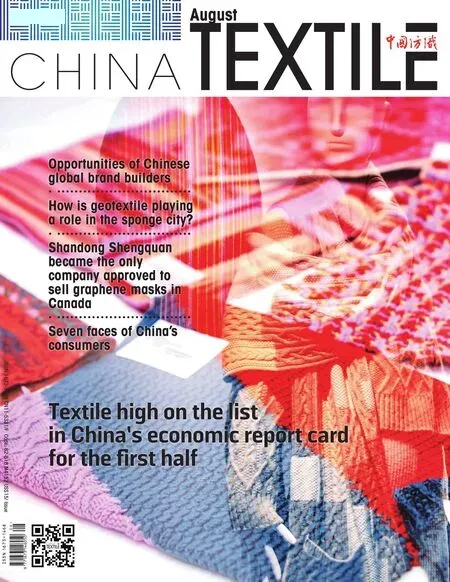Spandex price survey: demand greater than supply

PPI data show that as of June 28, spandex spot supply is still tight in Shandong, Zhejiang, Jiangsu, Fujian and other places, all parties hold a wait—and—see attitude to the aftermarket, in terms of price, 20D mainstream price reference 90,000—95,000 yuan/ton; 40D main—stream price reference 70,000—72,000 yuan/ton.
Currently, spandex prices have reached a 10—year high. “Over the years, the price of spandex has gone up and down, but it’s rare to see it exceed 60,000 yuan per ton,” said an insider who has worked in the industry for many years. “This round of sustained price increase is also unprecedented.” What is causing this round of spandex prices? What is the future price trend of span—dex?
Spandex prices hit a 10-year high as demand outstrips supply
The current price increase of spandex starts in Au—gust 2020. Meanwhile, the domestic pandemic was well controlled, the start—up rate of enterprises continued to improve, and the price of spandex began to rebound from the bottom.
According to Choice data, the price of spandex has risen more than 1.5 times in less than a year from 28,000 yuan/ton in August last year to 72,000 yuan/ton now.
On the demand side, domestic textile and apparel demand recovered and foreign orders returned in the post—pandemic period, driving the growth of spandex demand. On the supply side, due to the low price of spandex in the past few years, the industry has ac—celerated reshuffle, and many old production capacity has been eliminated. The supply and demand pattern of spandex has changed from excess capacity to tight supply.
Due to the outbreak, we have seen a significant increase in demand for spandex from downstream cus—tomers in the medical sector, such as mask ear—bands and protective clothing, whereas previously this seg—ment of the market was small. The pandemic also leads people to spend more time at home and increase their health awareness, which leads to increased consump—tion of home sportswear and leisure sportswear, as well as sufficient orders in the textile industry, which leads to a rapid growth in the demand for spandex.
In addition to domestic demand growth, affected by the COVID—19, the apparel industry exports of South—east Asian countries suffered a severe contraction, and part of textile orders were transferred to China, further pushing up the demand for spandex. The customs sta—tistics show that from September 2020 to May 2021,China’s textile and apparel export is USD 216.725 billion,with a year—on—year growth of 13.74 percent, among which the textile export is USD 105.230 billion, with a year—on—year growth of 6.47 percent. The accumula—tive export value of apparel was USD 111.495 billion, up 21.56 percent year—on—year. In particular, from January to May this year, China’s cumulative apparel export was USD 56.612 billion, up 48.33 percent year—on—year.
As of June 24, the operating rates of circular knit—ting machines and warp knitting machines in Zhejiang were 61 percent and 87 percent, respectively, an in—crease of 11 and 17 percentage points over the same period last year. In the first half of 2021, the operating rates of circular knitting machines and warp knitting were 53 percent and 72 percent, respectively; While in the same period of 2020, affected by the pandemic, the operating rates of circular knitting machines and warp knitting were only 33 percent and 34 percent.
In addition, the price of raw materials is also an important factor in the price of spandex. In the first half of this year, the average price of PTMEG, the main raw material of spandex, reached 34,515.5 yuan/ton, up 99 percent over the same period last year, and the average price of MDI, another raw material, also rose 55 percent.The rising cost is an important support for the price rise of spandex.
Capacity stability is expected to continue
In the second quarter, the spandex industry con—tinued to rise, and the performance of related listed companies is expected to continue to grow rapidly. At present, the operating rate of the spandex industry ex—ceeds 90 percent, and the inventory level has reached a historical low. Spandex business people said that under normal circumstances, the inventory is at a normal level for about one month, and the company’s inventory is only 3—5 days, which is the lowest in history. Spandex companies even said that the current production capac—ity is tight and the supply exceeds demand, and new orders queuing has become normal.
The first half of the year is coming to an end.Whether the spandex industry can continue its high boom in the second half of the year is the most con—cerned issue for investors.
In this regard, Sinolink Securities believes that in 2021, the increase of spandex supply is limited. Under the background of limited space for the increase of the operating rate of spandex factories and less new capac—ity, the tight supply situation of spandex will continue.In the case of cost support and strong market demand,spandex may embrace a new round of real prosperity.
In the future, the expansion of the spandex in—dustry will be mainly concentrated in the leading manufacturers of the industry, and the new production capacity will be mainly concentrated in the second half of the year. In the second half of this year, the spandex industry will still maintain a relatively high industry boom, and product prices may still reach new highs in the third quarter.
Up to now, the effective domestic production ca—pacity is about 870,000 tons. Although there are many plans to increase production capacity, they are mainly concentrated at the end of the year or next year. The spandex boom is expected to continue in the short term. If the new production capacity is completed as planned, it is expected to reach 1 million tons by the end of 2021, with a growth rate of close to 15 percent,which will effectively alleviate the tight spandex pro—duction capacity.
- China Textile的其它文章
- Supply and demand of yarn market forecast in the second half of year
- As price goes up and down, how the fabric enterprises survive?
- 2020/2021 China garment market development report
- Dye production decreased but is expected to pick up
- Prosperity index of the national textile and apparel specialized market declined overall
- Foreign trade trend in the second half of the year

